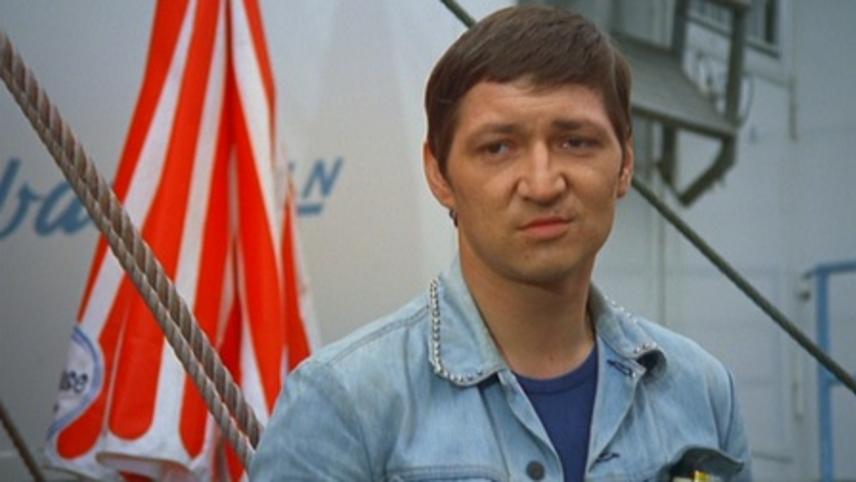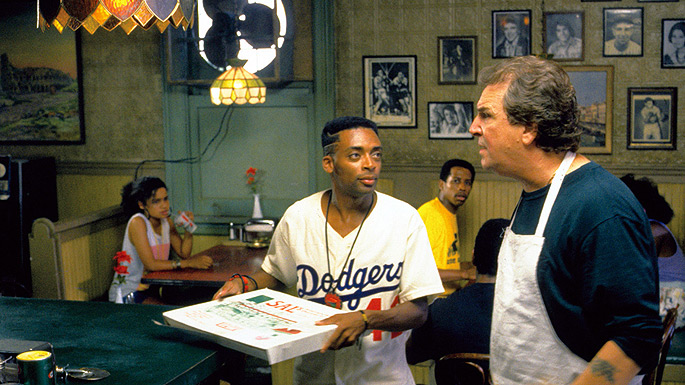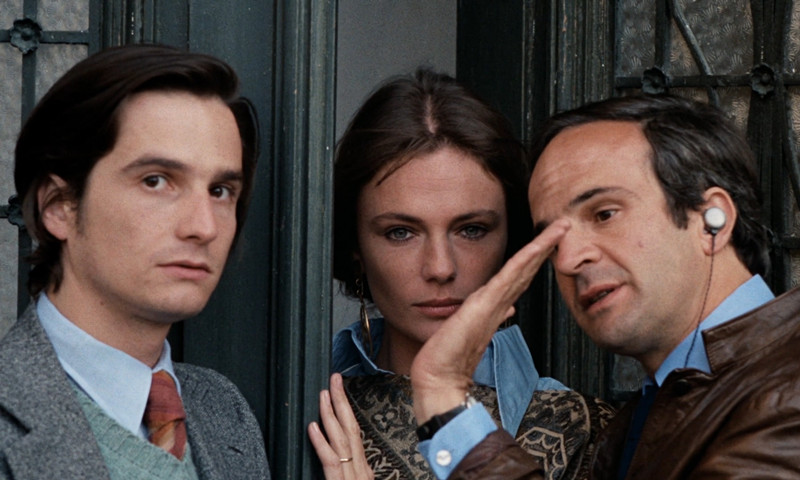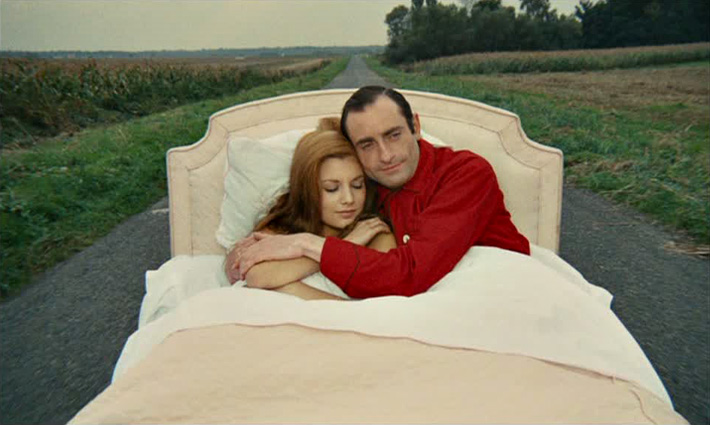6. Fox and His Friends – Rainer Werner Fassbinder

Fox and his Friends is an interesting tale of love and manipulation. Franz aka Fox, played by Fassbinder, is a low class man who wins the lottery and eventually allows himself to become financially and socially manipulated by his high class boyfriend, Eugen. What makes Eugen exceptionally cruel is his projected superiority over Franz. Seeing as Eugen has an exquisite knowledge of luxury living, he constantly belittles Franz for not knowing how to behave, or judging his taste and his lack of knowledge on etiquette.
The film explores the gay subculture of Germany in the 70s, and although it shares an intimate look at gay relationships, it highlights the natural forces of control and manipulation within all types of relationships. There is a clueless helplessness about Fox that Eugen is attracted to, and in contrast, there is a sense of taste and knowledge that attracts Fox to Eugen. Fassbinder himself was a homosexual, and many actors and other professionals who worked alongside him described him as the controlling person in relationships, which makes his role as Franz in this film an ironically transformative performance.
Some say Fassbinder’s films are an acquired taste, and that one must see his films two or three times in order to fully grasp their intention. Fox and His Friends is no doubt one of those films. Rich with symbolic shots and layered with subthemes, it will continue to bring up new topics of discussion as it continues to be revisited.
7. Fireworks – Takeshi Kitano

Kitano is known for being a very fast paced director on set. He has mentioned that he is simply more interested with what can be done with the footage in the editing process. Fireworks does not fall short of remarkable in terms of its tragic yet beautiful arrangement of music and shots, coming together to create one of his greatest films. From the poetic use of violence, to the silent mystery of the main character, Kitano’s Fireworks is constantly juxtaposing anger and violence as a direct response to sorrow and pain.
The plot follows a cop named Yoshitaka as he attempts to manage all of the pain he so subtly carries around with him every day. Not only is his wife dying of leukemia and can no longer speak, he owes Japanese gangsters money, his police partner becomes fully paralyzed in an accident, and he has to bear the loss of his daughter who died when she was a little girl. The film also exposes characters that are cursed with loneliness and abandonment, most notably his paralyzed partner, who uses art as a way to release his feelings of anger and pain.
Yoshitaka’s presence alone is enough to captivate you over the course of the film, saying few words and showing minimal emotion in his facial expression. He’s one of those characters who constantly has you wondering what a man with that much pain is thinking.
The film also uses violence in a way that is unique to Kitano’s style. He doesn’t glorify it but instead presents the brutal realities of it, and how it is always inevitable when injustice is involved. The film is compelling notably in the way the plot unravels itself, and through the profound way in which Yoshitaka cares for people.
8. Do The Right Thing – Spike Lee

Somehow, thirty years after Do the Right Thing has been released, the film still feels like a reflection of the themes it so bravely aimed to address. The timeless film currently has a street dedicated to it in the neighbourhood where it was filmed in Brooklyn, called Do the Right Thing Way.
Do the Right Thing takes place over the course of the hottest recorded day in New York. Spike Lee plays Mookie, a delivery boy working in a pizzeria owned by Italians in Brooklyn. He and others on the street become involved in a heated argument inside the pizzeria where things take a turn for the very worst.
The characters in the film, who are all residents of this non-gentrified neighbourhood in Brooklyn, are interesting in their own way, each uniquely inspired by the unforgettable fashion trends and music waves of the 80s. Although it’s depicted as a poorer area of New York, Bedford-Stuyvesant seems exactly as it probably was, a bright and exciting place for culture to thrive.
Aside from the film’s journey through time and culture, Do The Right Thing also deals with deeper issues of racism and global warming. The clashing differences between Italians and African Americans is apparent in the film, and escalates to an unfortunate series of events that can easily be compared to the injustices that people of colour are unfortunately still facing in the United States today. To make matters worse, global warming has also only escalated, gaining the mainstream attention it did not have thirty years ago.
In Lee’s attempt to project the times as they were, he managed to also predict that those same thirty-year-old issues he addressed are still apparent today.
9. Day for Night – Francois Truffaut

Day for Night is a special film for the obvious reason that it is about making a film. The subtle twist is that the film that Truffaut’s character Ferrand is making doesn’t seem like it will be a great one. How does one attempt to make a great film about making a bad film?
The ambitious nature of Day for Night’s plot is typical of Truffaut to attempt, and the intention of the film is indicative of the type of filmmaker he was: a curious auteur concerned with the constant reflection of human experiences.
Truffaut’s Day for Night highlights both the great luxury of producing a film, as well as the stressful realities that come with it. The plot of the film is occupied with fast paced decisions and inevitable complications that come about from all areas of production. It demonstrates the slow chipping away at the quality of a final film, and how difficult it is for everything to truly work out.
As a director in real life, Truffaut was never directly concerned with the final product of his films. He constantly aimed to prove that the beauty is in the details, and the details are in the process, making the production itself the art that is worth talking about. As a result, Day for Night takes us on an experience that is not exceptionally shocking, but instead quite remarkable in the way it shares what production crews go through. Truffaut allows us to be voyeurs to the committed passion that drives Ferrand’s film, and as a result directs us through Truffaut’s personal self-reflection.
10. The Great Love – Pierre Étaix

Pierre Étaix was not recognized amongst his equal parties in the mainstream media due to the complicated legal issues that involved the distribution of his films. He often is referred to as the “forgotten master of comedy”, and continues to be celebrated as one of the great contributors to comedy in cinema. Although his films were not seen for decades until petitions were signed to have them properly released, Étaix’s films are timeless and will be seen and appreciated for generations to come.
The Great Love shows Étaix’s distinctive use of color, primarily in the contrasting scene of his single pink bed and his red pajamas. The Great Love is not Étaix’s only film in color, but it is a great one, filled with masterfully crafted jokes and instances of socially critical satire. The film is one big gag, a slapstick classic filled with ruthless mockeries and clever ups and downs within the plot.
The film is about a well off man who finds himself falling for his secretary at work. The narrative is plain and simple, leaving space for the thought provoking, witty jokes that enrichen the story. Over the course of the awkward and confusing events of the film, we are introduced with the surreal beauty of dreams, and the imaginative freedom that we can live in within our own minds, and within film. While the movie makes you laugh, it is hidden with subconscious streams of questions that are awakened as you are laughing.